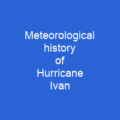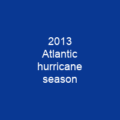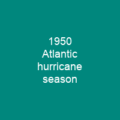The Saffir-Simpson Hurricane Wind Scale: A Closer Look
Have you ever wondered how meteorologists classify hurricanes? The Saffir-Simpson hurricane wind scale, a system that categorizes hurricanes based on their sustained winds, is the answer. This scale was developed in 1971 by Herbert Saffir and Robert Simpson, who introduced it to the public three years later in 1973.
Understanding the Scale
The Saffir-Simpson hurricane wind scale consists of five categories, with Category 1 being at least 74 mph and Category 5 being at least 157 mph. The system uses one-minute-average maximum sustained winds measured at 10 meters above the surface. While other areas use different scales for cyclones or typhoons, this scale is specifically designed to measure hurricanes.
Evolution of the Scale
The original scale included both subjective damage-based grades and objective wind gust speeds. However, later revisions simplified it to a pure wind scale, excluding flood ranges, storm surge estimations, rainfall, and location. This change aimed for simplicity but has faced criticism from scientists who argue that other factors significantly impact hurricane damage.
Changes Over Time
The National Hurricane Center (NHC) made significant changes to the scale in 2012 by extending the wind speed range for Category 4 storms. This change allowed for more accurate reporting of storm intensities, ensuring that people are better prepared and informed.
Impact on Different Categories
Each category has specific descriptions of potential damage caused by hurricane winds. Even though a Category 1 hurricane can still produce widespread damage and be life-threatening, hurricanes that peaked at this intensity have occurred in the past. Let’s explore what each category means:
Category 1: The Least Intense
Category 1 hurricanes are not to be underestimated; they can cause extensive damage to roofing material, doors, windows, and mobile homes. Small craft breaking their moorings is also a common occurrence. Extensive to near-total power outages and scattered loss of potable water are likely.
Category 2: Extremely Dangerous
Category 2 hurricanes can cause some structural damage to small residences and utility buildings, particularly those with minor curtain wall failures. Manufactured homes usually sustain severe and irreparable damage.
Category 3: Major Damage
Category 3 hurricanes produce more extensive curtainwall failures and heavy, irreparable damage to gas station canopies and other wide span overhang type structures. Mobile and manufactured homes are often flattened.
Category 4: Catastrophic Damage
Category 4 hurricanes cause complete roof failure on many residences and industrial buildings, and some complete building failures with small utility buildings blown over or away. Very heavy and irreparable damage to many wood-frame structures and total destruction to mobile/manufactured homes is prevalent in Category 4 hurricanes.
Category 5: The Most Intense
Category 5, the highest category of the Saffir-Simpson scale, causes complete roof failure on many residences and industrial buildings, and some complete building failures with small utility buildings blown over or away. Very heavy and irreparable damage to many wood-frame structures and total destruction to mobile/manufactured homes is prevalent in Category 5 hurricanes.
Historical Examples
Hurricanes like ‘Cuba,’ ‘Okeechobee,’ and ‘Camille’ are historical examples of Category 5 hurricanes that have made landfall. These storms caused extensive damage, highlighting the need for a robust scale to measure their intensity.
Alternative Classifications
Scientists have criticized the Saffir-Simpson scale as being too simplistic and have proposed alternative classifications such as the Hurricane Intensity Index and the Hurricane Hazard Index. These alternatives aim to account for factors beyond just wind speed, providing a more comprehensive assessment of hurricane impact.
Conclusion
The Saffir-Simpson hurricane wind scale remains a crucial tool in understanding hurricanes, but it’s important to recognize its limitations and the need for continuous improvement. As we face increasingly intense storms, ensuring that our scales accurately reflect their potential impact is vital.

You want to know more about Saffir–Simpson scale?
This page is based on the article Saffir–Simpson scale published in Wikipedia (retrieved on December 29, 2024) and was automatically summarized using artificial intelligence.







